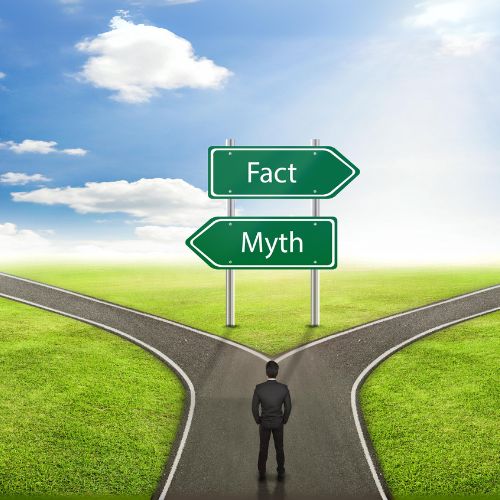
Climate change is one of the most pressing issues of our time, yet it remains clouded by misinformation and misconceptions. These myths can slow down efforts to address climate change, leaving people confused about its causes, impacts, and solutions. In this post, we will debunk some of the most common myths about climate change with clear, factual explanations, helping you better understand the reality of this global challenge.
Myth 1: Climate Change Is Just a Natural Cycle
The Reality:
It’s true that the Earth’s climate has changed over millions of years due to natural factors like volcanic activity, changes in
You said:
ChatGPT said:
solar radiation, and ocean currents. However, the current climate change we’re experiencing is primarily caused by human activities, particularly the burning of fossil fuels, deforestation, and industrial processes. These actions have significantly increased the concentration of greenhouse gases, like carbon dioxide (CO2), in the atmosphere, trapping heat and causing the planet to warm at an unprecedented rate.
Key Evidence:
- Historical Patterns: While natural cycles like ice ages have occurred in the past, they took place over thousands or millions of years. The rapid warming we’ve seen since the Industrial Revolution is happening in just a few decades.
- Scientific Consensus: A vast majority of climate scientists agree that human activities are the dominant cause of recent global warming. Studies have shown that natural factors alone cannot account for the current rise in global temperatures.
Myth 2: Climate Change Is Not a Big Problem
The Reality:
Climate change is already having severe consequences across the globe, and its impacts will only become more pronounced if action is not taken. Rising sea levels, extreme weather events, shifting ecosystems, and threats to human health are just some of the critical issues we face.
Key Evidence:
- Extreme Weather: The frequency and intensity of hurricanes, floods, droughts, and wildfires have increased as a result of climate change. These events cause significant damage to infrastructure, displace populations, and threaten food and water supplies.
- Ecosystem Disruption: Many species are struggling to adapt to the rapidly changing climate. Coral reefs, for example, are dying off due to warmer ocean temperatures, while polar bears face habitat loss as Arctic ice melts.
- Economic Costs: The economic impacts of climate change, including damage to property, healthcare costs, and lost productivity, are already being felt. If left unchecked, these costs will continue to rise.
Myth 3: It’s Too Late to Do Anything About Climate Change
The Reality:
While climate change is a complex and global issue, it is not too late to make a difference. Every effort to reduce greenhouse gas emissions can help slow the pace of warming and mitigate the impacts on ecosystems and human societies.
Key Evidence:
- Renewable Energy: Technologies like solar, wind, and hydropower are becoming more affordable and accessible. Transitioning to clean energy can significantly reduce carbon emissions and slow global warming.
- Policy Changes: Countries around the world are adopting policies aimed at reducing emissions, such as the Paris Agreement, which aims to limit global warming to well below 2°C. Individual actions, like using energy-efficient appliances and supporting sustainable practices, also contribute to these efforts.
- Adaptation and Mitigation: Communities are already finding ways to adapt to the changing climate by building more resilient infrastructure and developing agricultural practices that can withstand extreme weather. Further mitigation efforts can help avoid the most severe future consequences of climate change.
Myth 4: Cold Winters Disprove Global Warming
The Reality:
Colder-than-usual winters in some regions do not contradict global warming. In fact, climate change can lead to more extreme and unpredictable weather patterns, including colder winters in certain areas.
Key Evidence:
- Global Trends: Climate change refers to long-term global trends, not short-term local weather patterns. While some areas may experience colder winters due to disruptions in atmospheric currents, the overall trend shows that the planet is warming.
- Polar Vortex: The weakening of the polar vortex, a large area of low pressure and cold air that normally resides over the Arctic, can cause cold air to spill into lower latitudes, leading to colder winters in some regions despite global warming.
Myth 5: CO2 Is Not a Pollutant, and Plants Need It to Grow
The Reality:
While it’s true that carbon dioxide (CO2) is a natural component of the atmosphere and essential for plant life, the current levels of CO2 in the atmosphere are far higher than they have been for millions of years. This excess CO2 is trapping heat and causing the Earth’s temperature to rise, leading to widespread environmental and health problems.
Key Evidence:
- Greenhouse Effect: CO2 is a greenhouse gas, meaning it traps heat in the atmosphere. While this is necessary to keep the planet warm enough to support life, too much CO2 intensifies the greenhouse effect, leading to global warming.
- Ecosystem Imbalance: Higher CO2 levels do not necessarily mean better plant growth. In fact, too much CO2 can harm ecosystems by promoting the growth of certain plants over others, disrupting natural balances and reducing biodiversity.
Myth 6: Climate Scientists Are Divided on the Cause of Climate Change
The Reality:
There is overwhelming consensus among climate scientists that human activity is the primary driver of recent climate change. While there are ongoing debates about the best strategies for addressing it, the fundamental science is well-established.
Key Evidence:
- Consensus Studies: Multiple studies have shown that over 97% of climate scientists agree that human activities are the main cause of global warming. This level of agreement is comparable to the scientific consensus on the link between smoking and lung cancer.
- Scientific Reports: Leading scientific organizations, including NASA, the Intergovernmental Panel on Climate Change (IPCC), and the National Oceanic and Atmospheric Administration (NOAA), have all published reports confirming that human activities are the primary cause of climate change.
Myth 7: Addressing Climate Change Will Hurt the Economy
The Reality:
While transitioning to a low-carbon economy will require investment, the long-term economic benefits far outweigh the costs. In fact, addressing climate change presents numerous opportunities for job creation, innovation, and sustainable growth.
Key Evidence:
- Clean Energy Jobs: The renewable energy sector is one of the fastest-growing industries in the world. Jobs in solar, wind, and energy efficiency are outpacing those in traditional fossil fuel industries.
- Avoiding Future Costs: The economic costs of inaction, including damages from extreme weather, loss of biodiversity, and health impacts, are expected to be far higher than the costs of transitioning to a sustainable economy. Acting now can prevent more severe economic consequences in the future.
- Innovation and Growth: Investing in clean energy technologies can stimulate economic growth by fostering innovation and creating new industries. Countries and businesses that lead the way in developing sustainable technologies will be well-positioned in the global economy.






